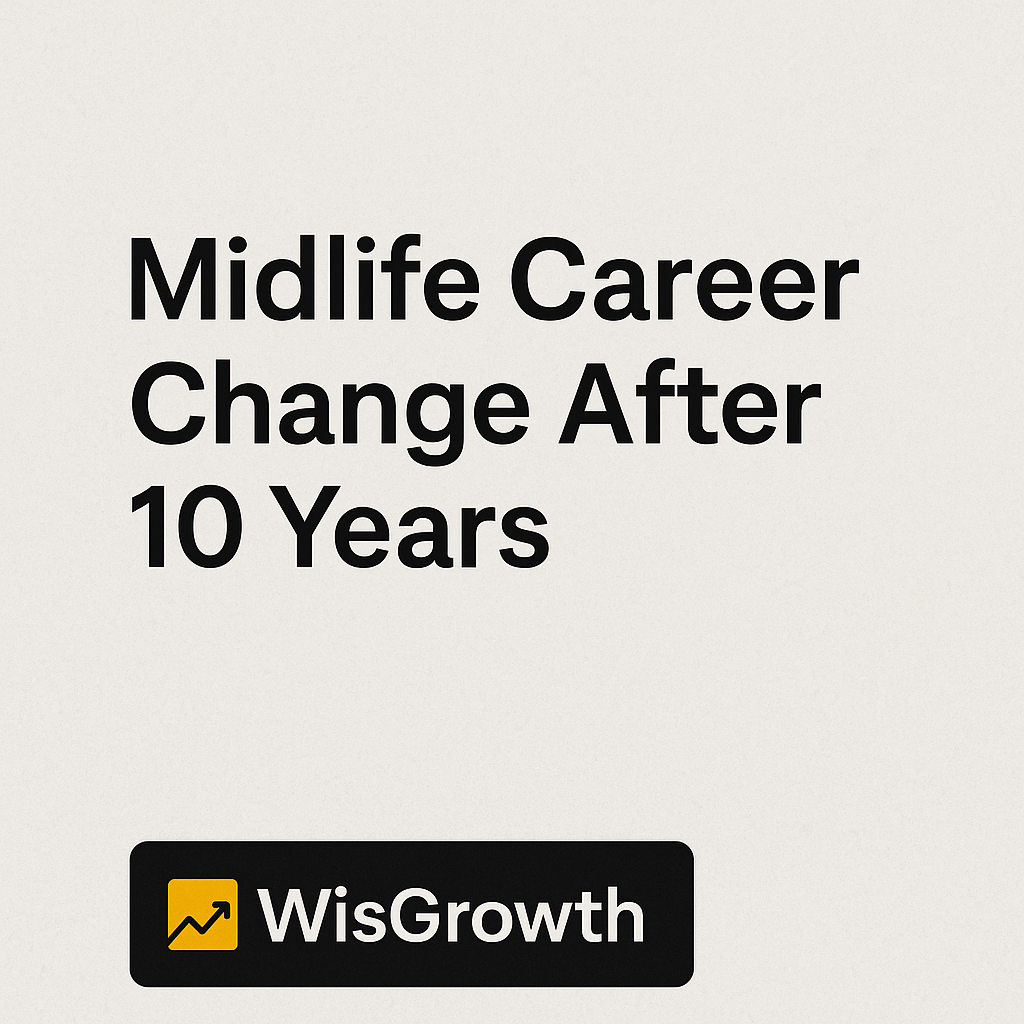Career Change After 10+ Years in One Industry
Burnout isn’t a personality flaw—it’s a design problem. If you’re in midlife and work has started crowding out life, let’s redesign your week and reclaim direction. At WisGrowth, our goal is simple: help you stop guessing and start moving toward a career that serves your life. We’re your clarity companion—practical, honest, and on your side.
What to do next
- Design a sustainable week: non‑negotiables first (sleep, family, health).
- Name the 3 energisers and 3 drainers you felt last week—rebalance around them.
- Run a 30‑day role experiment: one small project in a direction you’re curious about.
- Rewrite your story: ‘What I’m moving toward’ in 3 sentences.
- Take the Career Clarity Quiz to sharpen direction.
💡 Try this next week: Rewrite one resume bullet with an action verb + measurable outcome.
Why we exist: careers shouldn’t be a guessing game. We give you clarity, honest feedback, and a path you can actually follow.
How to switch careers after a decade in one track—without starting from zero. A repeatable framework to reposition your experience.

Why a career change after 10+ years makes sense
Careers are not linear. The path that fit your twenties may not serve your forties or fifties. Markets shift, life changes, values evolve. A midlife career reset doesn’t mean torching your past—it means translating your experience into the outcomes a different role or industry cares about. You’re not starting over; you’re switching containers for the value you already create.
The 4-phase plan (that fits real life)
- Clarity: Audit energizers and constraints. Pick one useful bet (not a forever identity) for the next 90 days.
- Capability: Close one decisive gap with short practice blocks. If you can’t demo it in two weeks, it’s too broad.
- Proof: Ship visible artifacts—case studies, dashboards, walkthroughs—that show outcomes, not intentions.
- Pipeline: Talk to humans weekly. Warm intros and calibrated outreach beat mass applications.
Want structure? Pair this guide with the 90-Day Career Reset and keep scope tiny.
Translate experience into outcomes (not tasks)
Hiring managers and clients buy results. Rewrite your bullets with the simple formula Problem → Action → Outcome:
- Reduced onboarding time by 28% by mapping blockers and shipping a checklist + walkthrough video.
- Increased lead-to-meeting rate from 14% → 22% with a routed inbox and clear ICP filters.
- Cut support response lag by 40% by automating triage and publishing a self-serve FAQ.
Don’t have metrics? Run a two-week micro-project now and measure the before/after. That becomes your first case study.
Capability: upgrade one lever skill
Pick one skill that unlocks interviews in your target path. Examples by direction:
To Product / Ops
- Basic SQL/Sheets dashboards
- Problem narratives & PRDs
- Customer interview scripts
To RevOps / CS / Growth
- Friction audits & quick wins
- Lifecycle email experiments
- Pipeline hygiene & routing
Cadence: 4 × 45-minute practice blocks weekly. Rebuild a public example, then create your own tiny artifact. Share for one piece of feedback.
Proof: show, don’t tell
In midlife pivots, a small portfolio outperforms a perfect resume. Aim for three pieces in 30 days:
- Work-adjacent improvement: Fix something small at your current job. Document baseline → intervention → result.
- Volunteer/consulting micro-win: Help a friend’s business or nonprofit. Keep scope to 5–10 hours.
- Public demo: A 3–5 minute Loom or a live page walking through your solution.
Pipeline: conversations, not roulette
Replace mass applications with calibrated outreach. Try this script:
Subject: Saw your push on onboarding
Hi [Name] — Noticed you’re shipping [X]. I recently cut onboarding time by 28% using a simple checklist + walkthrough. If helpful, happy to share the 3 mistakes we made and a 2-week plan you can test. — [You]
Weekly targets: 5–8 genuine notes, 2 follow-ups a week apart, 2 short calls. Track replies and next steps like a mini-CRM.
Common traps—and how to avoid them
- Over-learning: Courses are inputs; interviews buy outputs. Ship one artifact a week.
- Generic resume: Tune to the target problem. Use keywords honestly—after you earn them with proof.
- Comp anxiety: Calibrate early. Ask scope and success criteria in call one; share a range with rationale.
- Identity panic: You’re not erasing a decade; you’re reframing it. See midlife reset stories for patterns.
Your weekly scorecard (keep it tiny)
| Metric | Target | Why it matters |
|---|---|---|
| Practice blocks | 4 × 45 min | Specific reps compound faster than binge study. |
| Shipped artifacts | 1 per week | Visible proof unlocks higher-quality conversations. |
| Meaningful outreach | 5–8 + follow-ups | Warm, specific notes beat mass applies. |
| Sunday review | 15 minutes | Choose the smallest useful step for next week. |
What this looks like when it works
By week 4, you’ll likely feel calmer and more focused. You’ll have a couple of tangible wins, a clearer narrative, and a pipeline of conversations. By weeks 8–10, you should see callbacks from targeted roles and warm introductions from people who saw your proof. Many midlife changers don’t switch titles overnight—they earn scope in steps, using visible outcomes to negotiate responsibilities and compensation.
Tools that make this easier
Use the ATS-honest Resume Scanner to translate experience into target-role language. Try the Career Fit Questions to choose a useful bet. If you want accountability, consider coaching. Related guides: Resume Tips for Midlife Career Change, Career Reset at 40, and Job Search Over 40.
Start your 90-day experiment this week
One focused hour a day is enough to change your trajectory. Translate wins, ship proof, and talk to humans.
Get Your Career Clarity Audit →